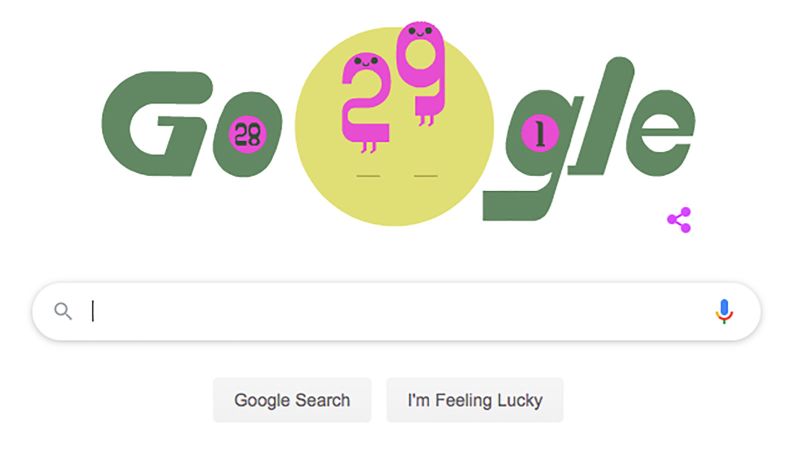Google has unveiled a new doodle on the occasion of Leap Day, January 29th. In 2024, Google is celebrating Leap Day on February 29th in a special way. The Google doodle shows that February 29th falls between February 28th and March 1st this year.
Why Google Doodles are Special
People are always excited to see Google’s doodle on any event. The day of February 29th comes once every four years, creating a unique frenzy around it worldwide. Google has celebrated this day with its new doodle, which is quite special. Google’s doodles typically revolve around a person, event, or program related to a specific country, but the Leap Year celebration doodle is universal, connecting with all countries.
February 29th – Leap Day
February 29th is recognized as Leap Day. The year 2024 is a Leap Year, meaning there are 29 days in February. This year, February 29th is here, whereas February usually has 28 days. To keep the calendar balanced, February 29th is added every four years.
Why Leap Year Matters?
Leap Year is not just about occurring every four years; it holds its own significance. A day on Earth is not exactly 24 hours but approximately 23.262222 hours. Adding February 29th each year would advance the calendar by 44 minutes, creating a different gap between all seasons and months.
What If There Was No Leap Day?
The day of February 29th helps to maintain the balance between the calendar and Earth’s orbit. Without Leap Day, the summer heat occurring in May-June would shift to November. The occurrence of February 29th ensures that all seasons align correctly each year, maintaining balance in the calendar.
How Was Leap Day Established?
In ancient times, days were determined based on the position of the sun. However, the demand for accurate timekeeping led to the creation of the calendar. Julius Caesar included an extra day in his Julian calendar in 45 BC. However, this still showed a difference of 11 minutes per solar year. Later, in the 16th century, Pope Gregory XIII introduced the Gregorian calendar, including Leap Day on February 29th. It was specified that Leap Day would occur in the year divisible by 4 instead of 100. Additionally, years divisible by 400 would also be considered Leap Years.
Disclaimer : इस न्यूज़ पोर्टल को बेहतर बनाने में सहायता करें और किसी खबर या अंश मे कोई गलती हो या सूचना / तथ्य में कोई कमी हो अथवा कोई कॉपीराइट आपत्ति हो तो वह [email protected] पर सूचित करें। साथ ही साथ पूरी जानकारी तथ्य के साथ दें। जिससे आलेख को सही किया जा सके या हटाया जा सके ।















